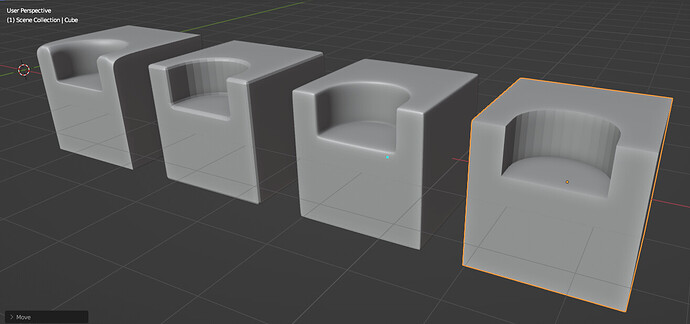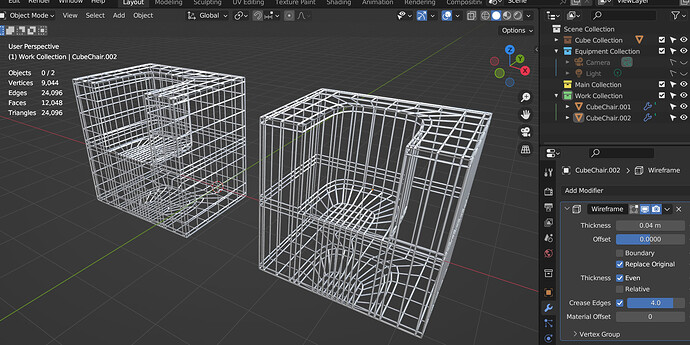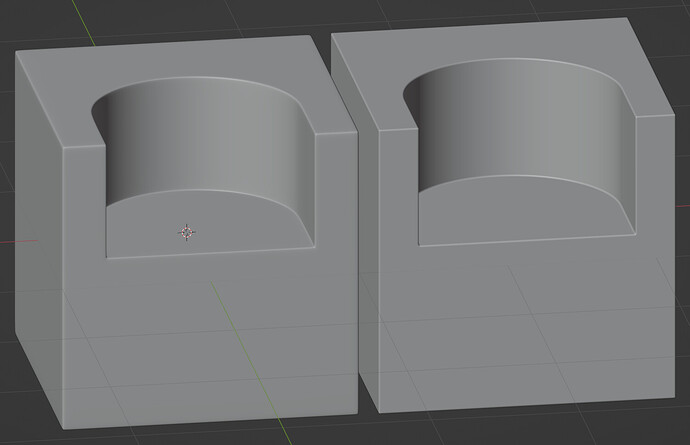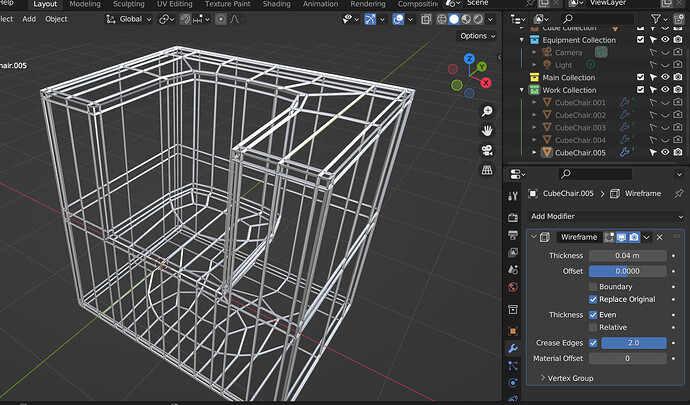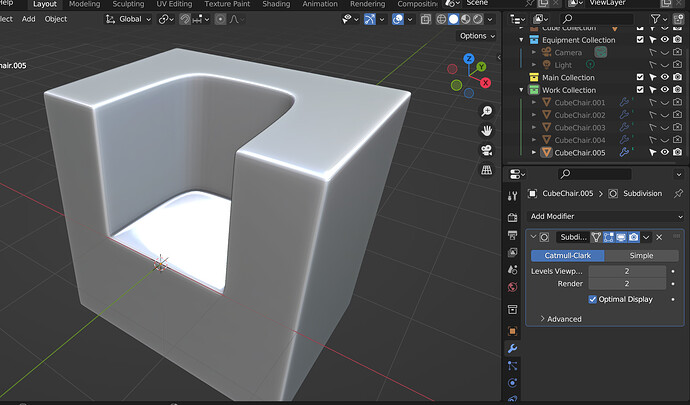Behold, my paint skills!
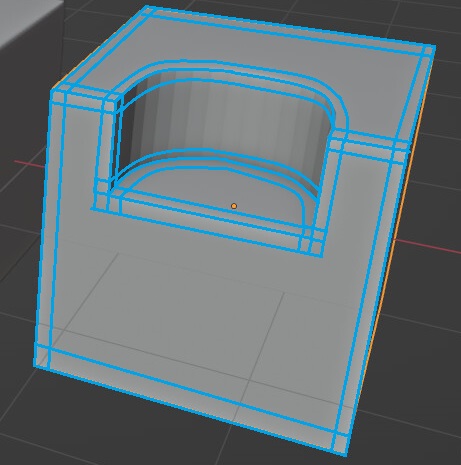
Or if your quads are larger, you can do this:
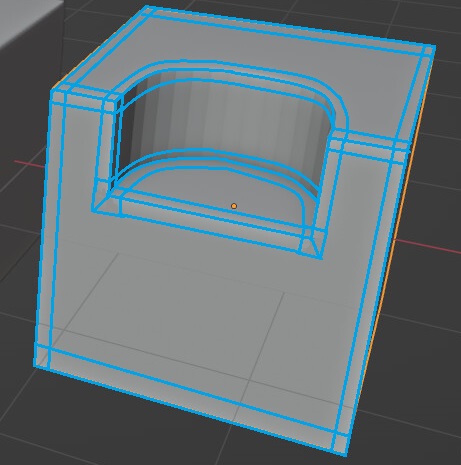
You can make the parameter loops smaller for a tighter bevel.
I’m not going to fill in all the quads but you get the idea. I would post a model but my work PC lacks a GPU to run Blender.
throw boolean and add cuts with the knifetool
How I’d do the topology may not be best for all uses (for example, game models use trigons exclusively and are as low-poly as feasible). But, all-quads “good” and going with the 16 edges of the curve as in your example:
CubeChairTest005wireframe.blend (1.2 MB)
You could reduce further if you don’t mind the curve being 8 main edges around, I found it substantially similar.
In my gut I knew I should be going for something like this but it just feels/looks like so much work. And why all the detail on the underside that probably won’t ever be seen?
To be less work – I copied it from the seat and moved it down to the bottom.
But depending on what you’re using this for this may not be the best method. You could use a cuboid shape to bool the seat out of a cube without applying the bool modifier, and not worry 'bout the topology, for example. If you’re putting this up on a site for others to use (so you don’t know what the end use is), then you doing the “so much work” ahead of time is pretty much the point, sorry.
Any reason you want to go the subsurf route?
I mean in this result below, can you tell which one is subsurf and which one is boolean + bevel.
I heard blender bob and other people say over the years that some employers prefer as many things as possible to be done with subdivs, even stuff that might initially be done with purely hard surface modeling techniques sometimes, often, need to be redone as subdivs for a shot with an explosion.
It makes sense from a pipeline perspective. Subsurf requires proper topology, proper topology means the mesh is cleaner and easier for multiple people to work with.
Since redoing the topology of a model can take a lot of time, it might be better to focus on developing a workflow that can speed up the retopology workflow or modeling practices that don’t require a lot of reopologizing and cleanup afterwards.
Excessive subdiv on geometry with tight bevels/detail loops can cause normal calculation to fail, causing artifacts in renders. You will need to do preparatory work by destructively subdividing the mesh into quads of similar/appropriate size so that things don’t break, as other comments here already show. It’s hard not to turn this into a losing battle if you don’t know how the asset will be used, so I’d make sure to ask about it beforehand. If you can deal with either answer, you should be fine.
The question tempted me, and I did refine:
CubeChairTest012.blend (1.3 MB)
330 faces, all quads, all poles 3 or 5, that’s my best shot.
